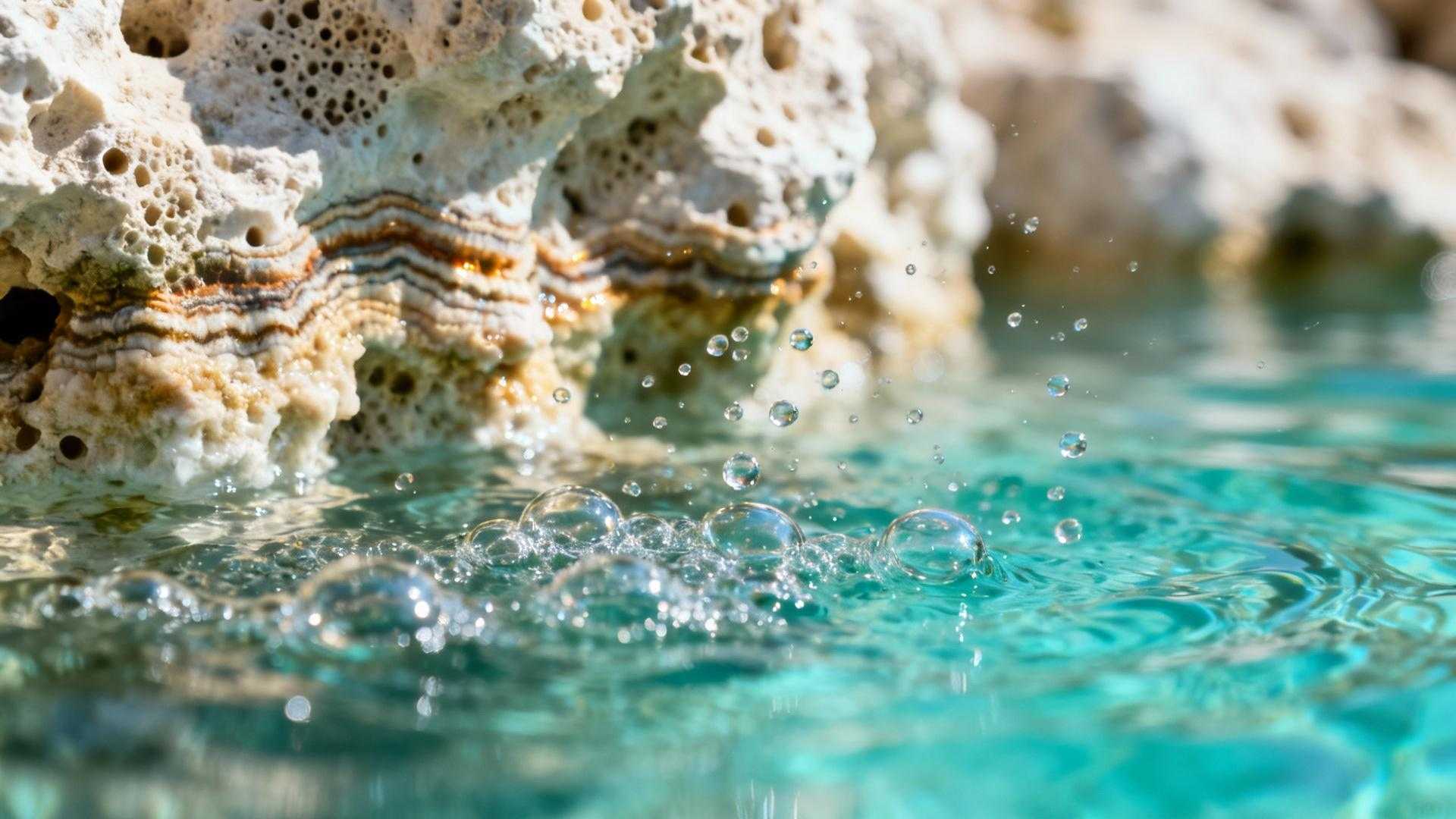The first sip stops you mid-step. Bubbles rise from limestone springs in southeastern Idaho, naturally carbonated for centuries. No bottle, no price tag—just geological alchemy that won international recognition in 1893.
This is Soda Springs, where 3,000 residents guard America’s most accessible mineral water wonder. While commercial destinations charge $45 for mineral tastings, Hooper Springs Park offers the real thing free.
The Springs That Won a World’s Fair—Then Stayed Secret
Driving into Caribou County at 5,800 feet elevation, you pass rolling hills and Bear River meandering through valley floor. The Oregon Trail crossed these same springs in 1812, when fur traders discovered water bubbling with natural carbonation.
Pioneer Sarah White Smith wrote in 1838 about water resembling “artificially prepared soda water.” Local bakers discovered the springs made better bread than any store-bought ingredients. By 1887, bottling operations shipped Soda Springs water nationwide.
The 1893 Chicago World’s Fair judges awarded first prize to this Idaho mineral water over European competitors. Yet today, unlike other heritage villages that commercialized their World’s Fair fame, Soda Springs chose access over admission fees.
What Makes Soda Springs’ Water Worth International Recognition
The secret lies 100 feet underground, where limestone filters groundwater for decades. Pressure forces carbon dioxide into solution, creating natural sparkling water at 72°F year-round.
North America’s Only Captive Geyser—Erupting on Schedule
In 1937, a drilling accident created an unexpected tourist attraction. Water shoots 100 feet high every hour on the hour, making this the world’s most punctual geyser.
Between eruptions, smaller spouts bubble and gurgle on the boardwalk. Mineral deposits leave gray residue on cameras, but locals say it wipes off easily. The small visitor center provides clean restrooms and historical displays.
Natural Carbonation That Bakers Discovered First
Chemical analysis reveals the same mineral composition that impressed 1893 judges. High calcium and magnesium levels create the distinctive taste that pioneers used for baking.
Unlike manufactured sparkling water, this carbonation develops naturally through geological pressure. The process takes 30-50 years from rainfall to spring emergence, filtering through multiple limestone layers.
Sampling the Springs—Where Locals Actually Go
Hooper Springs Park opens year-round with no entrance fees. Boardwalks lead directly to tasting stations where families fill mason jars, continuing traditions from the 1940s.
Hooper Springs Park’s Free Tasting Stations
Morning visits offer the clearest water and fewer crowds. The springs maintain 72°F temperature even in January, when surrounding snow creates striking contrasts with bubbling limestone pools.
Photography works best during golden hour, like Montana’s hidden ranch experiences, when light catches mineral formations around spring edges. Multiple viewing platforms accommodate wheelchairs and families with young children.
The Bear River Connection Nobody Photographs
Beyond the famous geyser, Bear River offers fly fishing and wildlife viewing. Oregon Trail markers dot the landscape where 400,000 pioneers passed between 1841-1869.
Local guides recommend combining spring visits with nearby Octagon Springs Park for a complete mineral water experience. Both locations remain free and maintain historical authenticity without theme park infrastructure.
Why Soda Springs Never Became Another Saratoga
Saratoga Springs, New York charges $38.69 for 12 bottles of mineral water. Their spa treatments cost $150+ per session for similar mineral exposure visitors get free in Idaho.
City council meetings reveal deliberate choices to preserve accessibility. Like West Virginia communities protecting memorial sites from exploitation, Soda Springs residents consistently reject commercialization proposals that would charge admission.
Water rates could increase 25% if spring revenue disappeared, yet locals prefer maintaining public access over tourist profits. This philosophy keeps authentic experiences available for visitors seeking genuine Western heritage.
Your Questions About Soda Springs’ Natural Carbonated Water Answered
When’s the best time to visit and how do I get there?
Spring through fall offers optimal weather for outdoor sampling. Idaho Falls Airport sits 120 miles away, roughly 2 hours by car through scenic mountain valleys.
October provides ideal temperatures around 60°F with minimal crowds. The geyser operates year-round on its hourly schedule, though winter access requires careful driving on mountain roads.
Can you really drink the water straight from the springs?
Locals have consumed spring water for five generations without treatment. Natural limestone filtration removes impurities while adding beneficial minerals that won 1893 international recognition.
The same geological process that creates Iceland’s pristine geothermal pools occurs here through different minerals, producing potable water at safe consumption levels for most healthy adults.
How does it compare to commercial mineral water destinations?
Saratoga Springs spa packages cost $200-400 per person for mineral water treatments Soda Springs provides free. The water contains identical beneficial minerals but without luxury resort markups.
Authenticity differs significantly—commercial destinations often dilute or process natural springs, while Soda Springs offers direct-from-source access exactly as pioneers experienced in 1838.
Afternoon sun illuminates white limestone rings marking centuries of carbonated bubbling. Local families fill containers while sharing stories from 1947. This is preservation without profit, access without admission.
